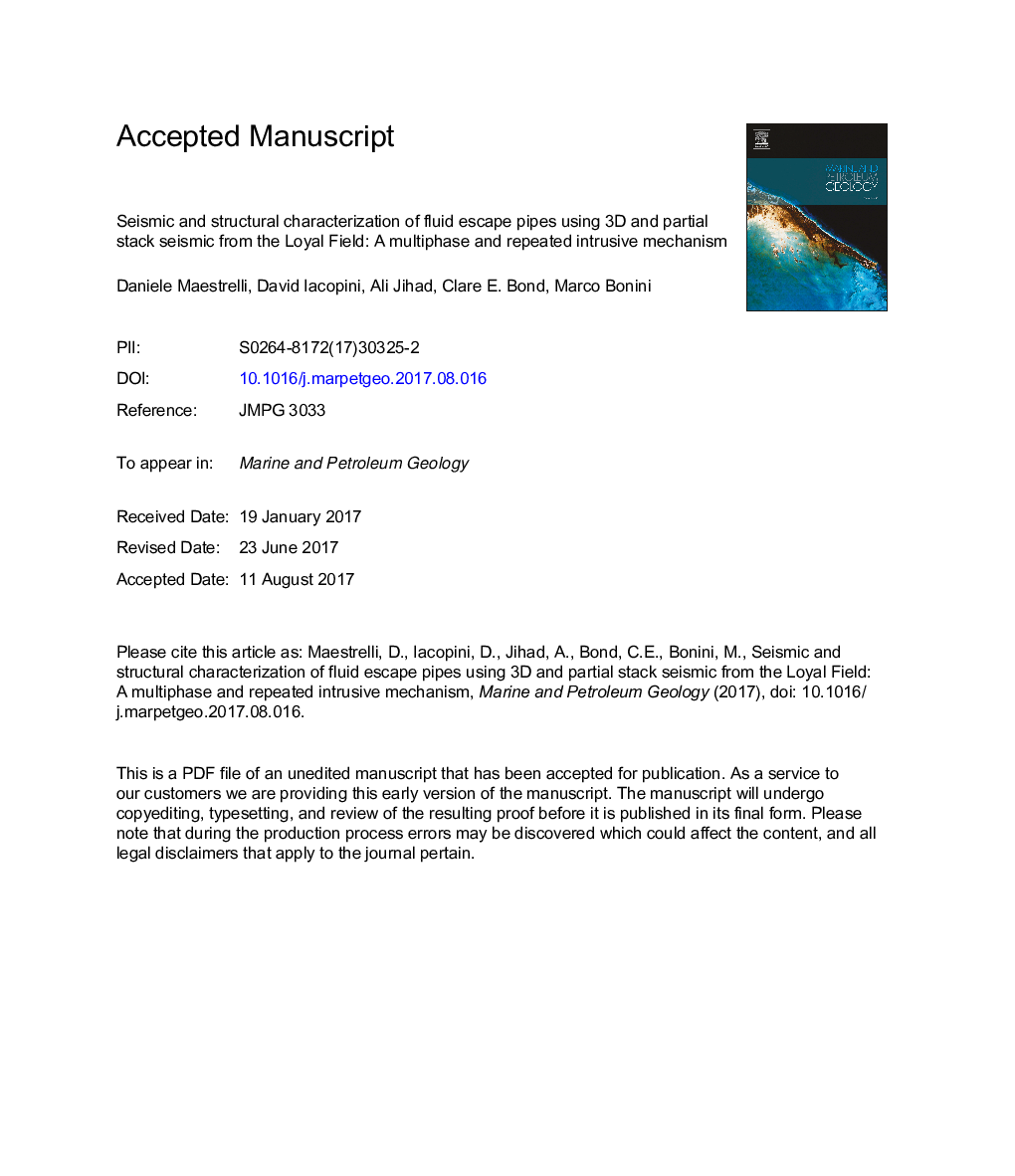| Article ID | Journal | Published Year | Pages | File Type |
|---|---|---|---|---|
| 5781928 | Marine and Petroleum Geology | 2017 | 57 Pages |
Abstract
The potential for fluid leakage from sub-surface reservoirs has important implications for CO2 storage, hydrocarbon reservoirs and water resources. Understanding the genesis, morphology, fluid flow mechanisms and extent of fluid escape from reservoirs allows for better risking of geological resources and storage potential. Here we describe in detail the structures of fluid escape pipes from the Loyal Field, observed from a 3D full and partial stack seismic dataset. The seismic imagery suggests that the fluid escape pipes are rooted at least in the main Paleocene reservoir and by-pass the reservoir seal to cross the post Lista Formation overburden up to the intra-Neogene units. The pipes extend for a few hundred meters to a few kilometres and show varying shape and structure from blow-out structures to incipient mud volcanoes. A detailed analysis of the seismic characteristics observed both from main baseline and partial stack data allows a division of the pipes into two families: (1) seeps and pipes following structural discontinuities and (2) pipes unrelated to the pre-existing structural features. The pipes internal seismic response, the reflector termination of the main conduits and the distribution of stacked bright reflectors suggest an upward migration mechanism (during pipe birth and development), requiring a cyclic switching from non-Darcy hydrofracturing (during overpressure) to Darcy flow lateral migration (during low-pressure stage).
Keywords
Related Topics
Physical Sciences and Engineering
Earth and Planetary Sciences
Economic Geology
Authors
Daniele Maestrelli, David Iacopini, Ali A. Jihad, Clare E. Bond, Marco Bonini,
